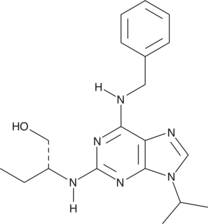Description
A phenoxazine and chromophore with antibacterial and anticancer activities; active against M. scrofulaceum, M. marinum, and M. intracellulare (MICs = 2.8, 11.3, and 5.6 µg/ml, respectively) but not M. tuberculosis, M. smegmatis, M. kansasii, or M. fortuitum (MICs = >45 µg/ml); cytotoxic to a variety of cancer cells, including MCF-7, A549, MIA PaCa-2, and LoVo-1 cells (IC50s = 1.67, 5.48, 7.16, and 20.03 µM, respectively) as well as HUVECs but not HELs (IC50s = 16.06 and >50 µM, respectively); prevents lung metastasis in a B16 mouse melanoma model of metastasis at 0.5 mg/kg when administered simultaneously with B16 cells or every three days; has been used as a readout in the study of catalytic oxidation of 2-aminophenol by various metal-containing complexes
Formal name: 2-amino-3H-phenoxazin-3-one
Synonyms:
Molecular weight: 212.2
CAS: 1916-59-2
Purity: ≥98%
Formulation: A solid
Product Type|Biochemicals|Antibiotics||Product Type|Biochemicals|Natural Products|Microbial Metabolites||Research Area|Cancer|Cell Death||Research Area|Cancer|Cell Migration & Metastasis||Research Area|Immunology & Inflammation||Research Area|Infectious Disease|Bacterial Diseases



